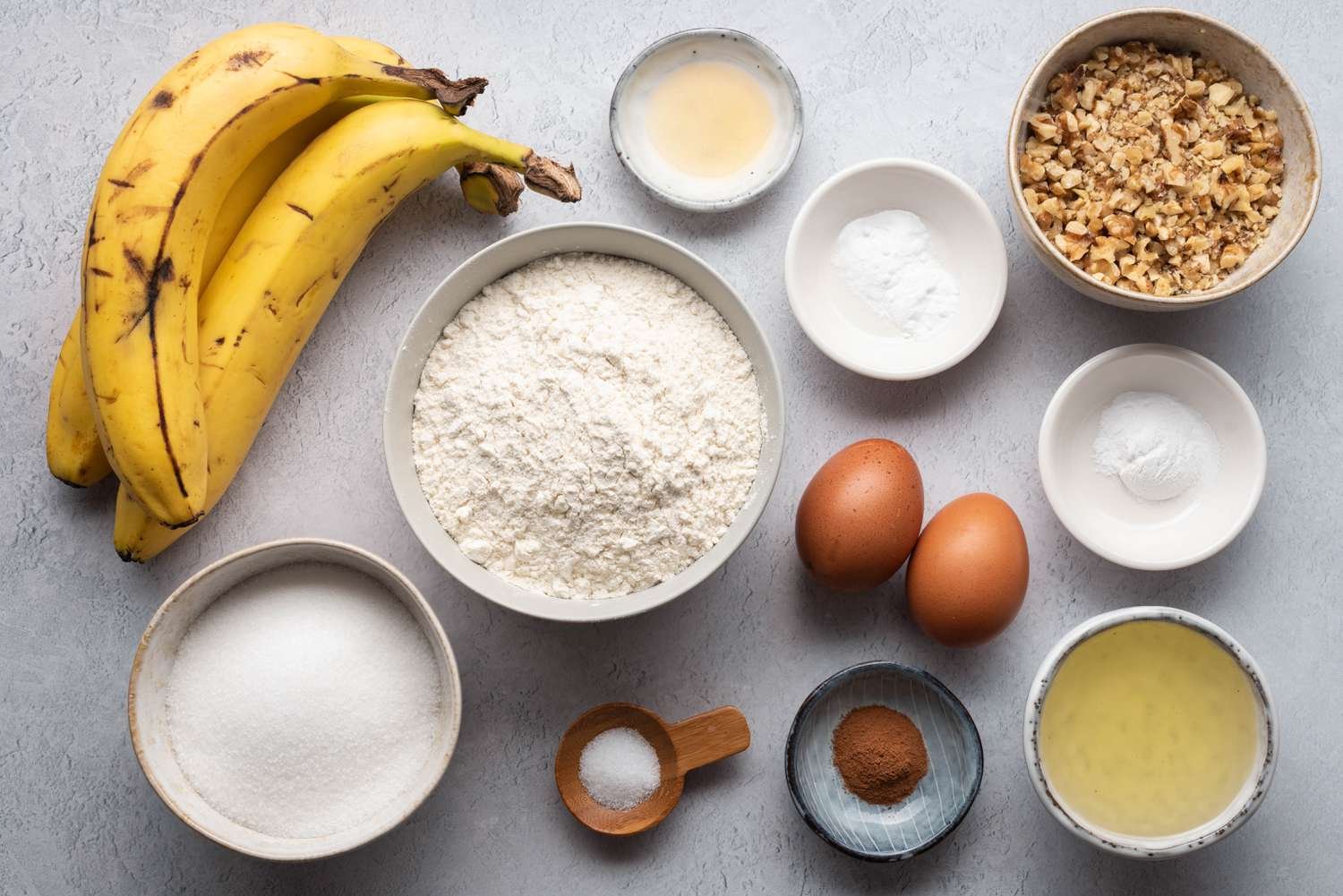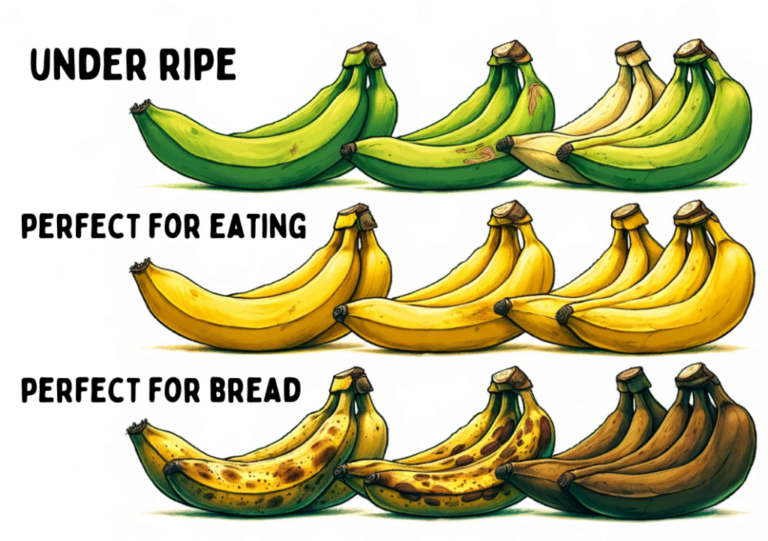Banana Bread 101: Essential Tips for Baking the Perfect Loaf Every Time
Banana bread is a timeless classic that has found a cherished spot in kitchens worldwide. Whether you’re a seasoned baker or a novice in the kitchen, the allure of a warm, moist loaf of banana bread is undeniable. However, achieving that perfect texture and flavor can sometimes be elusive. Understanding the fundamentals of banana bread and avoiding common mistakes can make a significant difference in your baking results.
In this comprehensive guide, we’ll explore essential tips and techniques to help you bake the perfect banana bread every time. From choosing the right bananas to mastering the mixing process, we’ll cover everything you need to know to ensure your banana bread turns out delicious and satisfying.
Why Banana Bread Is So Popular?
Before we dive into the nitty-gritty of banana bread baking, let’s take a moment to appreciate why this simple recipe has remained a favorite for so long. Banana bread’s appeal lies in its comforting aroma, tender crumb, and the versatility it offers. It’s a great way to use up overripe bananas, and its straightforward recipe makes it accessible to bakers of all skill levels.
**1. Versatility: Banana bread can be customized with various add-ins such as nuts, chocolate chips, or dried fruit, making it adaptable to different tastes and preferences.
**2. Ease of Preparation: With minimal ingredients and a simple mixing process, banana bread is an excellent choice for both beginner and experienced bakers.
**3. Comforting and Delicious: The rich, sweet flavor of banana bread, combined with its moist texture, makes it a comforting treat that pairs perfectly with a cup of coffee or tea.
Choosing the Right Bananas
The quality of your bananas is crucial to the success of your banana bread. Here’s what you need to know:
**1. Use Overripe Bananas: For the best banana bread, use bananas that are well beyond their prime—those with brown or black spots. Overripe bananas are softer and sweeter, making them ideal for baking. They will mash more easily and contribute to a richer flavor and moister texture.
**2. Avoid Green Bananas: Under-ripe bananas that are still green or firm lack the sweetness and softness needed for great banana bread. If you only have green bananas, speed up the ripening process by placing them in a paper bag with an apple or baking them in the oven.
**3. Mash Thoroughly: When mashing the bananas, ensure they are as smooth as possible. A few lumps are fine, but a mostly smooth consistency will help your bread bake evenly.
Measuring Ingredients Accurately
Accurate measurement of ingredients is vital for achieving the right balance in your banana bread. Here’s how to measure correctly:
**1. Flour: Use the spoon-and-level method to measure flour. Spoon the flour into your measuring cup and level it off with a knife or spatula. Avoid scooping directly from the bag, as this can pack the flour and lead to using too much.
**2. Sugar: For granulated sugar, simply fill the measuring cup and level it off. If you’re using brown sugar, pack it firmly into the measuring cup and level it off with a knife.
**3. Liquid Ingredients: Use a clear liquid measuring cup for accuracy. Check the measurement at eye level to ensure you have the correct amount.
Mixing the Batter
The way you mix your banana bread batter can greatly affect the final product. Follow these tips for the best results:
**1. Mix Wet Ingredients First: Combine the mashed bananas with melted butter, sugar, and any other wet ingredients (such as eggs and vanilla extract) before adding the dry ingredients. This ensures an even distribution of flavors and moisture.
**2. Add Dry Ingredients Gradually: Sprinkle the baking soda and salt over the wet mixture, then fold in the flour. Avoid dumping all the flour in at once, as this can lead to overmixing.
**3. Mix Until Just Combined: Overmixing can result in a dense, heavy loaf. Stir the batter just until the flour is incorporated. It’s okay if there are a few lumps—these will dissolve during baking.
Preparing the Pan
Proper preparation of your loaf pan is essential for a successful bake:
**1. Grease the Pan: Generously grease the pan with butter or non-stick spray to prevent the bread from sticking. Make sure to coat the sides and bottom thoroughly.
**2. Use Parchment Paper: For extra assurance, line the bottom of the pan with parchment paper. This makes it easier to lift the bread out of the pan and helps prevent sticking.
**3. Choose the Right Pan Size: Use a 9×5 inch loaf pan for the best results. If you use a different size pan, you may need to adjust the baking time.
Baking Your Banana Bread
The baking process is critical to achieving the perfect loaf. Here’s how to get it right:
**1. Preheat Your Oven: Always preheat your oven to 350°F (175°C) before placing the loaf inside. This ensures even baking and helps the bread rise properly.
**2. Check for Doneness: Bake the bread for 60 to 65 minutes, or until a toothpick inserted into the center comes out clean or with a few moist crumbs. If the top of the bread starts to brown too quickly, cover it with aluminum foil to prevent burning.
**3. Cool Properly: Allow the bread to cool in the pan for about 10 minutes before transferring it to a wire rack to cool completely. This helps the bread firm up and makes it easier to slice.
Storing and Serving Banana Bread
Proper storage ensures that your banana bread stays fresh and delicious:
**1. Wrap and Store: Once cooled, wrap the bread tightly in plastic wrap or aluminum foil. Store it at room temperature for up to three days.
**2. Freeze for Later: If you want to store banana bread for a longer period, freeze it. Wrap the cooled loaf in plastic wrap and then in foil before placing it in the freezer. It will keep for up to three months.
**3. Serve Fresh: Banana bread is delightful on its own, but you can also serve it with a pat of butter, a drizzle of honey, or a smear of cream cheese. For a special treat, try it toasted or as a base for French toast.
Common Mistakes to Avoid
To ensure your banana bread turns out perfectly, be mindful of these common mistakes:
**1. Using Under-Ripe Bananas: As mentioned, bananas that aren’t ripe enough will result in less sweet and less flavorful bread.
**2. Overmixing the Batter: Overmixing can lead to a dense loaf. Mix until just combined to avoid this issue.
**3. Incorrect Oven Temperature: Make sure your oven is preheated to the correct temperature. An oven that’s too hot or too cold can affect baking times and the final texture of your bread.
**4. Not Checking for Doneness: Don’t rely solely on baking times. Check the bread with a toothpick to ensure it’s fully baked.
**5. Improper Storage: Store banana bread properly to maintain its freshness. Avoid leaving it uncovered or in a humid environment, which can affect its texture.
Conclusion: Mastering the Art of Banana Bread
Banana bread is a delightful and versatile recipe that can bring joy to any occasion. By understanding and avoiding common mistakes, you can achieve a perfectly moist and flavorful loaf every time. From choosing the right bananas to mastering the mixing process and proper storage techniques, these tips will help you bake banana bread that’s sure to impress.
Whether you’re baking for yourself, your family, or as a gift for a friend, this guide provides everything you need to know to make banana bread that’s consistently delicious. So next time you have overripe bananas on hand, don’t hesitate to whip up a batch of banana bread. With these tips, you’ll be well on your way to baking a perfect loaf every time.
Happy baking!







